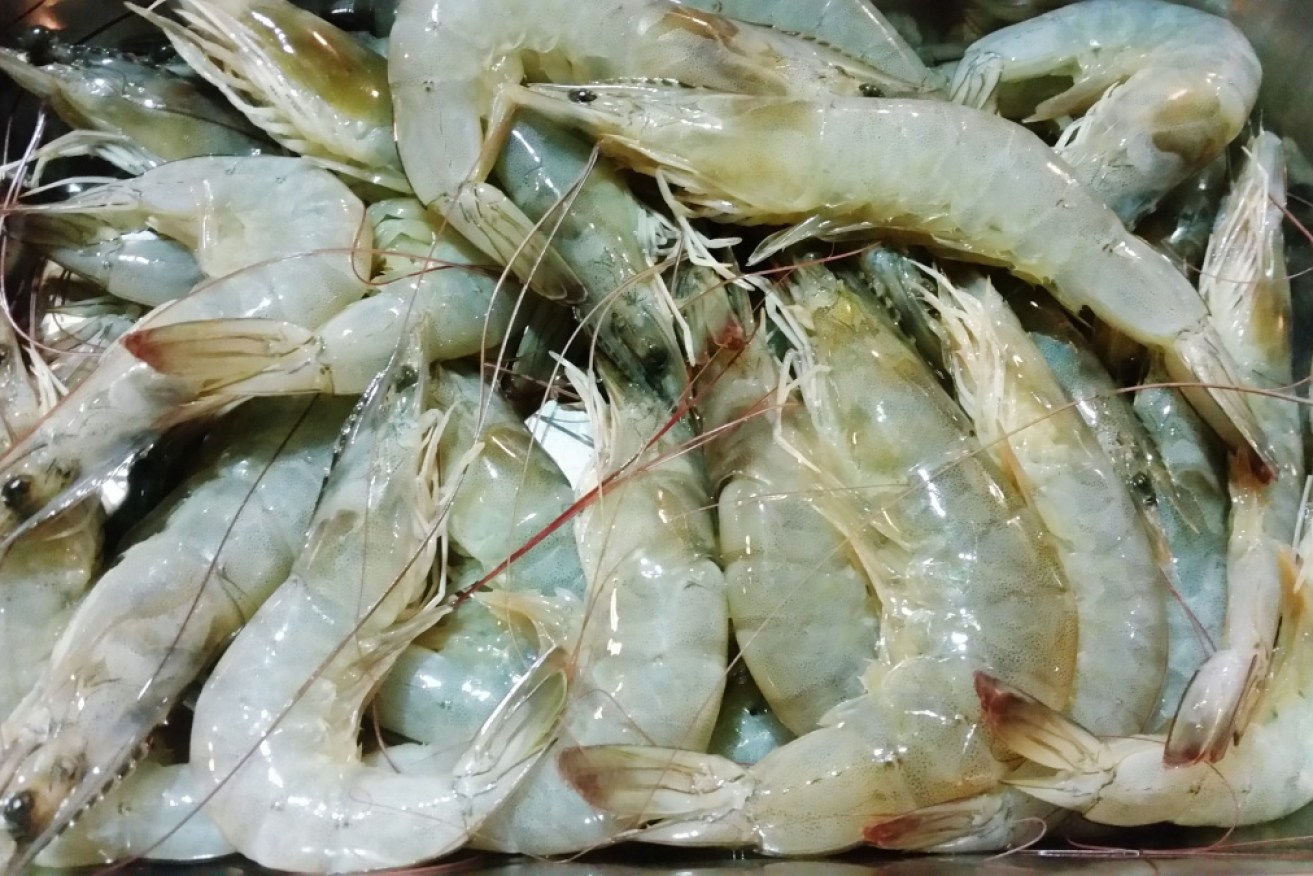Why raw prawns are about to get more expensive


Millions of dollars of prawns have had to be destroyed in the past month. Photo: Getty
The government has suspended the importation of green prawns due to an outbreak of the destructive white spot disease, in a move that will likely affect the price of prawns for Australian consumers.
On Friday, Agriculture Minister Barnaby Joyce announced the suspension, saying the disease posed a “huge concern” for the Australian prawn industry.
“We are going to have a suspension on the importation of green [raw] prawns into Australia to try and get on top of this issue straight away,” Mr Joyce said, noting it would likely affect Australian shoppers.
“Unfortunately, we haven’t suspended the laws of supply and demand … what happens in the market happens in the market,” he said.
White spot disease (WSD) is foreign to Australia, and while it does not pose a risk to humans, is highly contagious and deadly to prawns.

WSD can stop wild prawn growth and devastate prawn farms. Photo: ABC
A representative for the Department of Agriculture told The New Daily WSD had been detected in five prawn farms south of the Logan River, Queensland, since December, and was capable of “killing up to 100 per cent of infected prawns within days”.
Importers may have breached protocols
Speaking to media on Friday, Mr Joyce accused importers of potentially breaching Australian law.
“There is the suspicion that they have not followed the proper protocols … which is the law of the land on how you import prawns into this country,” said Mr Joyce, who famously threatened to kill Johnny Depp and Amber Heard’s dogs after the actors illegally smuggled them into Australia.
He said green prawns – which are uncooked – already purchased could safely be consumed as the disease was eradicated in the cooking process.

Once cooked, the disease is eradicated. Photo: Getty
However, Mr Joyce asked Australians not to dispose of them in waterways or use them as fishing bait.
Mr Joyce said the price impact on Australian consumers during the busy summer season was worth avoiding the potentially devastating longterm affects of WSD.
“I would rather deal with this action than deal with the ramifications that we didn’t take all the mechanisms at our disposal,” Mr Joyce said.
“It is an insurance against what could possibly happen. We are 100 per cent sure that we have detected white spot in imported green prawns,” he said, noting WSD could possibly “wipe out half” of the $360 million Australian prawn industry.
The Logan River area comprises about one quarter of the Australian prawn farming industry, including 40 per cent of tiger prawns.

Mr Joyce said the indefinite ban was necessary to protect the industry. Photo: AAP
Mr Joyce said one importer had already been banned, while a second was under investigation.
The bans will remain in place until the risk is “minimised”, he said, but won’t affect the importation of cooked prawns.
Prawn farmers fed up
Devastated prawn farmers say the government should have acted years ago to stop the importation of raw prawns they suspect brought the exotic virus to Australia.
“We’ve been pushing for this for many, many years,” Australian Prawn Farmers Association chief executive Helen Jenkins said.
“Why import a product that’s likely to cripple our industry.”
She said the impact of the white spot outbreak had already been devastating, and it had been very difficult to watch affected farmers lose a lifetime of work.
“Watching farms die and the industry crumble over the last month has been really, really hard,” she said.
A 2009 risk assessment found that without proper safeguards, there was a high likelihood that diseases carried by imported raw prawns could spread to Australian populations.
But instead of a ban, as some had wanted, Biosecurity Australia decided to beef up quarantine rules to mitigate the risk.
What is WSD?
WSD is common in Asia and the Americas, but is exotic to Australia.
In 2000, there was an outbreak of the disease in Darwin, which was also managed by suspending imports.
Both the disease and the virus that causes it – white spot syndrome virus – have been detected in both farmed prawns and in wild prawns south of the Logan River.
However, a representative for the Department of Agriculture said initial positive results in wild prawns had given way to negative results.
– with AAP








